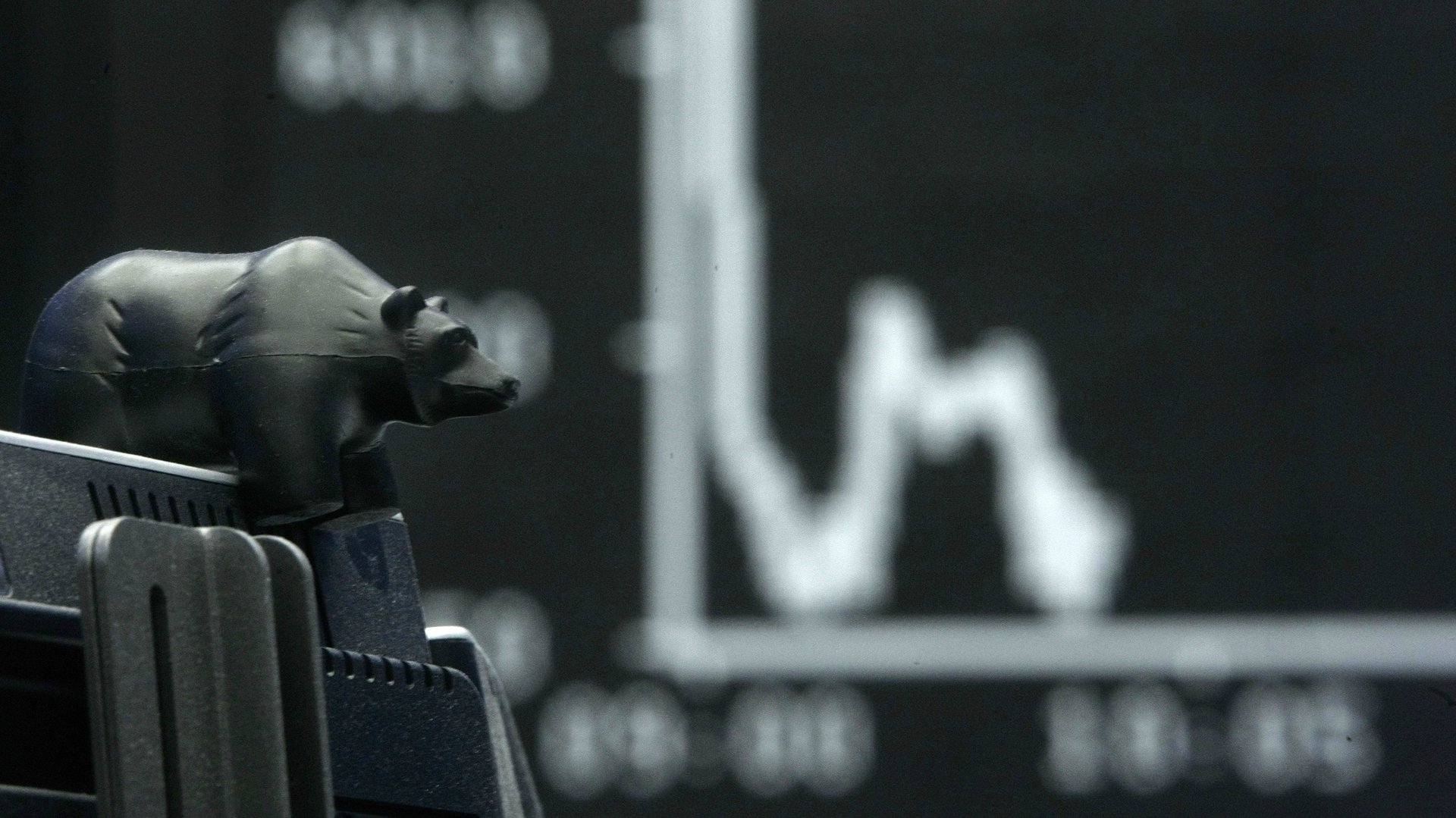US financial company stocks are officially in a bear market
The US economy has powered ahead this year, but a downturn in bank stocks signals investors are nervous about what’s ahead for 2019.


The US economy has powered ahead this year, but a downturn in bank stocks signals investors are nervous about what’s ahead for 2019.
Since its peak in late January, the S&P 500 financials index has fallen more than 20%—typically considered the threshold for the start of a bear market. Concerns about economic growth and the increasing cost of borrowing money may be making investors more pessimistic (paywall).
The Trump administration has been kind to the banking industry by cutting taxes and lightening regulations for the sector. But tax changes at the end of 2017 that helped juice expansion in gross domestic product won’t be repeated next year. And the Federal Reserve has been increasing interest rates, slowly removing the proverbial punchbowl from the party. The central bank is expected to raise borrowing costs again on Dec. 19.
Those are among the reasons that bank stocks, from Goldman Sachs to Wells Fargo and Citigroup, have declined some 20% or more this year. There are also growing concerns about the increasing debt loads owed by companies and governments, as well as a build-up of risk and diminished lending quality in the leveraged loan market.
Rising interest rates can help banks by allowing financial companies to ratchet up the price of loans to households and businesses, while still paying little on savers’ deposits. But it can also snuff out economic growth, which removes loan demand and increases defaults. At the same time, there are growing signs of pressure on banks to finally increase the rates they pay on savings deposits, which reduces profitability. Internet startups and new online units of banks are adding to that pressure, offering more attractive savings rates.
While bank earnings have been strong recently, traders aren’t waiting around for any bad news to filter through. They’re selling now, and will ask more questions later.